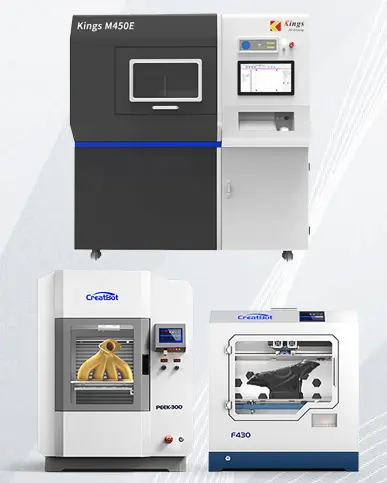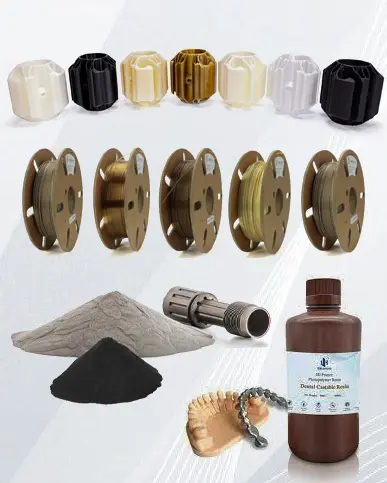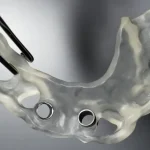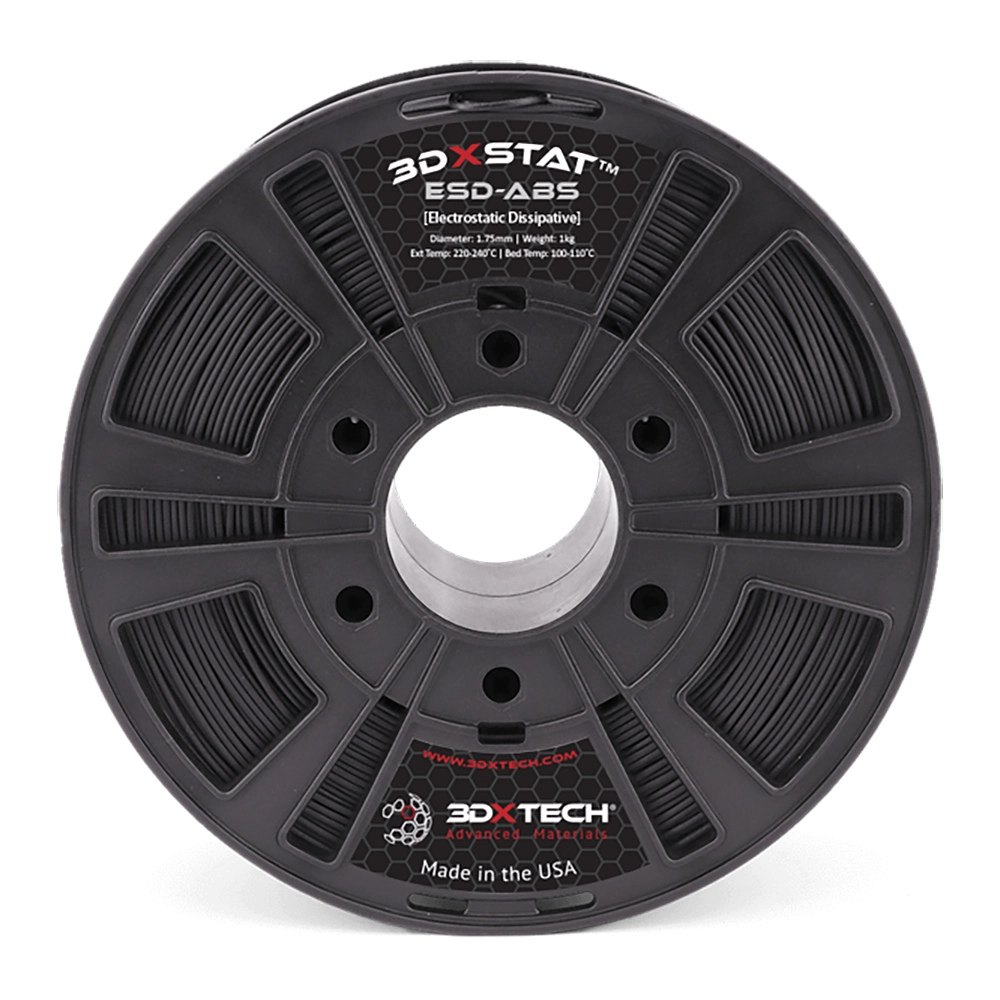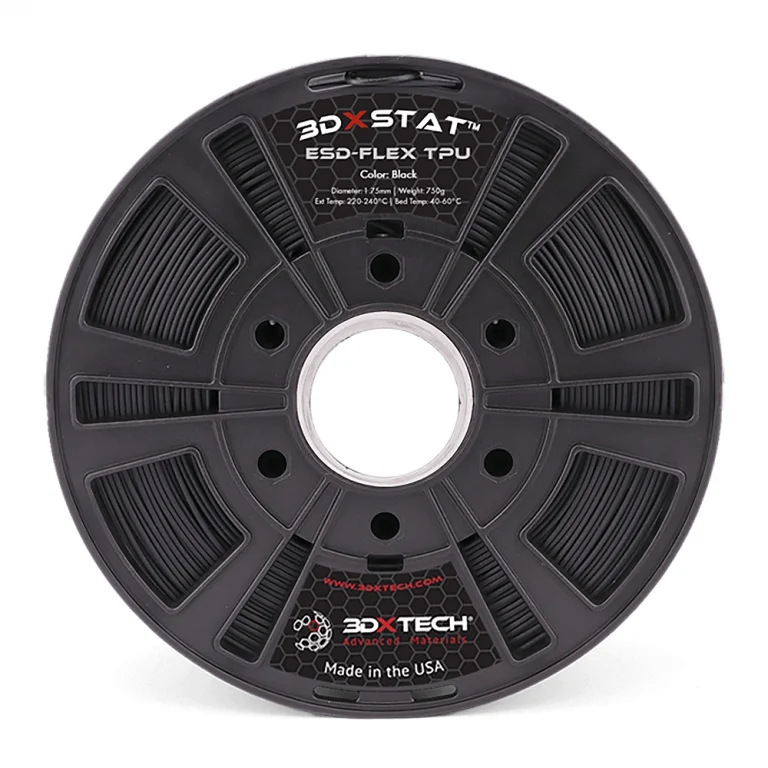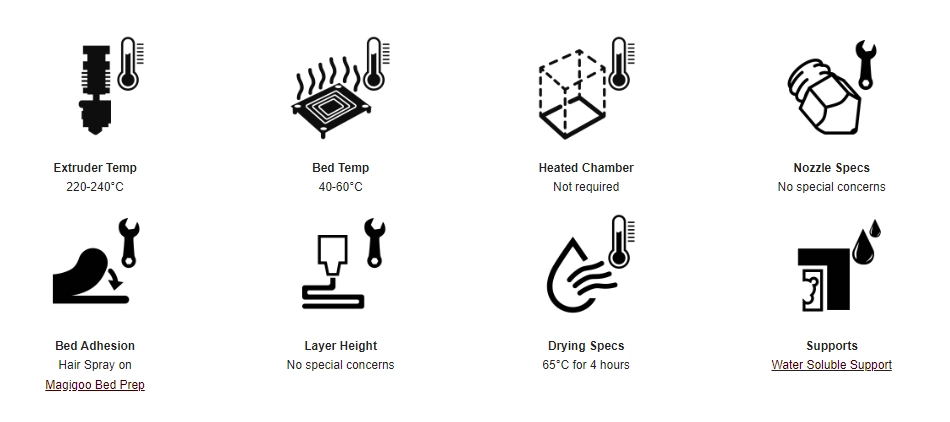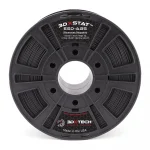Benefits of Flexible TPU Include:
- High elongation, over 300%
- Shore 90A semi-flex hardness
- Ease of printing compared to similar flexible materials
- Excellent layer bonding
- Outstanding fatigue resistance
- Very low odor while printing
- Low moisture absorption
- Retains flexibility even at low temperatures
- Styrene and BPA free
Benefits of 3DXSTAT™ Include:
- Consistent surface resistivity
- Improved retention of impact & elongation
- Low particulate contamination
- Minimal contribution to outgassing and ionic contamination
Typical ESD Flex Applications Include:
- Semi-con: HDD Components, Wafer Handling, Jigs, Casings, & Connectors
- Industrial: Conveying, Metering, and Sensing Applications
Target Conductivity for 3DXSTAT ESD Flex:
- 10^3 ohm surface resistivity on 3DP sample using concentric ring test method.
- Note: Internal studies have indicated that increased extruder temperatures can achieve higher levels of conductivity. Likewise, lower extruder temperatures have resulted in lower levels of conductivity. Each printer is set-up differently, not to mention varied part geometry. Therefore, expect some trial time to understand how ESD Flex filament works in your specific printer and application.
Surface Conductivity as a Function of Extruder Temperature:
The surface resistance of the printed ESD Flex part will vary depending on the printer’s extruder temperature. For example, if your testing indicates the part is too insulative, then increasing the extruder temperature will result in improved conductivity. Therefore, the surface resistance can be ‘dialed-in’ by adjusting the extruder temperature up or down depending on the reading you receive on your part.

